Browse Exhibits (47 total)
Worldly Designs: A Cross-Cultural Comparison of Medieval Illumitations
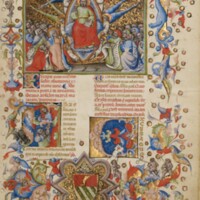
Hello, and welcome to my exhibit!!
With so much focus placed on the achievements of Western cultures during the medieval era, I was really curious to explore art pieces from other cultures in an attempt to figure out what we can learn through a more cross-cultural look at works from this time period. In this project, I analyze key elements of illuminations from around the world, from the comfortable familiarity of Italian culture to other, less celebrated cultures during the period such as South Asian, Jewish, and Persian cultures. Despite social difference and physical distance, the vast majority of cultures that were writing manuscripts during the middle ages were united in that they drew some form of illuminations next to their writing, for a variety of different reasons.
However, this does not mean that each culture’s way of decorating their manuscripts was the same. By comparing these differences of each culture’s illusion formats, subjects, and styles, this project shows that art analysis can shed light on the values and beliefs each group held during this era, especially among and for the common people, who many of these decorations were aimed towards.
Because the period of time we consider to be the “medieval era” is so broad and only takes into account the political and social events of (Christian) Europe, I will instead be focusing on slightly different time frames for each culture in order to capture an accurate representation of each one’s unique history. In addition, there are many variables affecting illumination style within a cultural group, such as the individual artist, type of manuscript, and period of time the piece was drawn. While this project does take this into account, my focus will be more on making slightly wider generalizations based on the available information.
Nine Circles of Dante's Inferno

Hello and welcome to my exhibit on the Nine Circles of Dante's Inferno!
This project aims to visualize the story of Dante’s Inferno in a digital humanities format. In manuscript traditions, manuscripts allow for unique expressions of narrative tone through their format and illuminations, and in their creation depend on the scribe’s interpretative ability to copy down a text. My project aims to exemplify how these qualities – formatting as a means of influencing tone and authorial interpretability – can exist within the digital humanities, and therefore act as similar to traditional manuscript creations.
Poverty Levels in Southern Italy
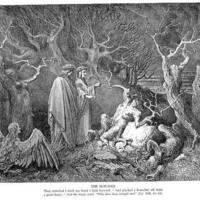
Hello,
Thank you for exploring my exhibit. In my exhibit I demonstrate how Southern Italy's poverty levels have changed over the years and how they are influenced. In the items that I have chosen relate to Southern Italian poverty and how they relate to The Divine Comedy as well. My first item is Pinnochio, this is a story that relates to a poor craftsman who makes a wooden doll come alive. My second item is "The Suicides" painting by Gustave Doré. The painting was a resombolance of the seventh circle of hell in The Divine Comedy, the punishment was to become a tree and have Harpes eat the leaves off of the trees causing great pain. Finally, my third item is the Guild, the Guild were groups of merchants and craftsmen who formed a government ran by the small group.
The Sins of Simony
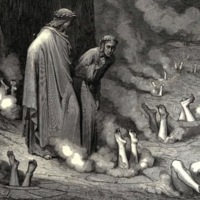
Dante Alighieri finishes the first part of three total parts of his "Divine Comedy," Inferno in 1314. In it, he uses poems as a means to describe his own life and experiences as he would have wanted the people of florence to percieve his life. Through it, he talked at length about people being punished for their actions throughout their lifes at their demise; however, perhaps he had a greater purpose in mind for certain people that personally wronged him.
The Goddess of Fortune
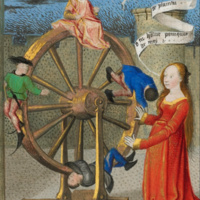
Hello and welcome to my exhibit on Fortuna, the goddess of fortune!
Over many centuries, Lady Fortuna has stood as a symbol for prosperity and luck. Represented in many different cultures and religions, the Goddess herself essentially first made an appearance through the mentionings of the Roman philosopher, Boethius.
One would think that the image of Fortuna has changed quite a bit over the last few centuries, however as this paper will show, Fortuna has been both seen in the negative and positive light. This exhibit will show the different images and representations that exist of Fortune from the time of famous authors and philosophers such as Boethius from the 500s, to Dante and Boccaccio from the medieval period, to finally Catherine Staples of the 21st century.
I hope you enjoy the exhibit and learn more about the different interpreatations of Lady Fortuna throughout centuries upon centuries!
-Anastasia Preradovic
Poverty Levels in Southern Italy

Hello,
Thank you for clicking on my exhibit. In my exhibit I demonstrate how Southern Italy's poverty levels have changed over the years and how they are influenced. In the items that I have chosen relate to Southern Italian poverty and how they relate to The Divine Comedy as well. My first item is Pinnochio, this is a story that relates to a poor craftsman who makes a wooden doll come alive. My second item is the Guild, the Guild were groups of merchants and craftsmen who formed a government ran by the small group. Finally, my third item "The Suicides" painting by Gustave Doré. The painting was a resombolance of the seventh circle of hell in The Divine Comedy, the punishment was to become a tree and have Harpes eat the leaves off of the trees causing great pain.
The Impact of the Renaissance Period on Poverty: How Art Became a Bridge for Awareness
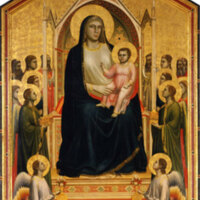
Welcome.
Art has been demonstrated to persuade the public, and convey them into purposely feeling emotions. However, in the medieval period, art was more perceived for admiration purposes; for decoration; for luxury; a way to represent wealth, and convey a message. Then, during the High Renaissance period many artists demonstrated that their pieces of art did not represent anything materialistic, but moreover something meaningful to the human race; something natural.
The Renaissance period paved the way for future artists to represent emotional situations in their art, as well as bring awareness to the public on issues that were overlooked and not often addressed, such as poverty.
Navigate through the evolution of art, and judge for yourself how it has become a bridge for awareness to current issues in our world, like poverty.
Dante’s Perceived Perspective on Influential Figures
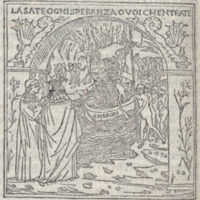
Hello! Thank you for your interest in my exhibit :)
Dante, after rising to fame in Italy and later around the world for his literary works became known as one of the most well respected writers of his time. He was also known for being very opinionated. He had a stark take on usary and banking being unfavorable acts of greed. This may have led to a number of interesting encounters with other influential figures of Italy.
In my exhibit I explore the different encounters and opinions that Dante may have taken a stance on if he had encountered the Medici family, those in the inner circle of the Church, or Emperor Frederick II. Many of these figures gained immense control of Florence, Rome, and other large city states. They may have committed sins that Dante would go on to define and interpret through his writing and The Divine Comedy.
Please click the tabs to the right to explore different topics and figures who Dante may have taken an interest in.
Cover Photo Credit: Botticelli, S. (1495). Ritratto di Dante Alighieri. painting.
Dante and the Church on Poverty in Society
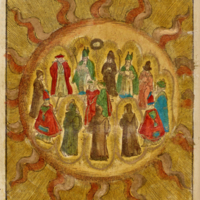
Welcome to this Omeka Exhibit
Poverty as a concept has been intertwined with human history for thousands of years, with its meaning and connotation shifting over time and people groups. While today poverty is generally seen as a problem that needs solving, for the Christian church the pursuit of poverty has been seen as a virtuous task since the oldest teaching and traditions. In this exhibit, we will explore prominent works from the Middle Ages including Dante’s Divine Comedy, and Lorenzo Monaco’s Christ on The Cross with The Virgin and Saint John to see a snapshot of the beliefs of the people on poverty at the time. As well as looking at some of the original biblical passages and teachings that this school of thought is based on.
Enjoy "Dante and the Church on Poverty in Society"